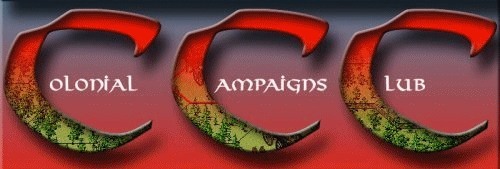|
Had to jump in before I'm gone.
Re: Movement. The engine is designed for only 5 classes of troops: Inf line, Inf column, cav, art, & wagon. So requesting a patch for a certain type of Inf would require major work on the engine (IMO.)
Re: British Historical movement. Howe had trained ALL the army to move in close, open and extended orders. The infantry was in 2 ranks at all times but the intervals were different ... 22" = close, 48" = open, 10' = extended.
Easiest way to reflect this is to a) always play with line disruption on, b) modify the pdt file so the British percentage chance of disruption is 2%, c) Rate British Light Infantry as quality B. This will decrease the disruption for British infantry in line to almost nothing in the open, and reduce it greatly in woods. For British Light infantry the quality bonus will almost negate the woods disruption modifier so it will be as is they are moving in the open (for disruption purposes.)
With the above the Brits will be able to move almost anywhere on the battlefield in LINE. Which will allow them to be able to fire or ADF nearly always.
American units should not be given L or M type ratings enmasse. Only trained light units should have the L rating, to allow them to fight in "Indian style", i.e. skirmish as we think of it today.
Militia units should be rated as Infantry to prevent them from operating in mass skirmish mode. (Militia units tried to fight as line troops, they just weren't very good at it. Washington continually tried to fight open, stand up battles with his army. Not real bright, but he did. Greene in the South resorted to more of hit and run, denying the Brits of the country and its supplies. He was more successful.)
However, if Americans do have Militia rated as M, and they insist on fighting "Indian Style", then the British players should NOT be timid in launching, bayonet charges in line time and again. Americans rated as M type should be given K weapons, muskets without bayonets, for play balance.
The above will, should, result in battles where American militia will deploy in X formation to shoot the Brits apart, only to be run over by a bayonet charge. Unless ....
You're fighting me, and then you will see me trying Washington's approach to war, probably racking up a similar win/loss record as he did. <img src=icon_smile_wink.gif border=0 align=middle>.
re: Recommended stacking limits. This needs to be a player self-discipline thing since a hex can hold, using closed intervals for files and ranks, 3,400 men (68 files wide by 50 ranks deep.) The following would be the max to stack to allow proper numbers to fire. (if you want to deploy a "closed column" then have the top company in line and the rest in column, and move the stack together. Although not strictly a proper column with successive companies in line, as they did, it works in the game engine well since it shows the limited firepower of an infantry column but the density for melee ... and yes to use this I would love a density modifier .... then we could show several types of battalion formations. For example in War of 1812 the top two companies could be in line to show a column of division.)
3-rank closed order = 144 men. Rounded to 150. French and some Prussian units.
2-rank closed order = 96 men. Rounded to 100.
2-rank open order = 48 men. Rounded to 50.
2-rank extended order = 24 men. Rounded to 25. The above three are LINE formations Brits would use all three, the Americans could use all three but usually only the closed & open versions.
X-formation = 24 men, perhaps 48 if you allow that two skrimish lines are working in the same hex one behind the other and the second fires through/over the first (not terribly unrealistic.)
Of course the basic units in the canned scenarios are too big for the above. I have made a Bunker Hill varient and a spin-off varient of Dierk's 'Long Way Home', available at Rich's SDC site, in which I have split each company into two platoons/sections. These basic units are small enough to use the above guidlines. The results usually work out to be ... closed order two or more companies per hex, open order one company, extended order(s) one platoon per hex. This gives one the option to spread a thin line to fire from and extert control over larger areas, but exposing one's troops to melees and potential command control loss. The other option is to stay concentrated but leaving vast amounts of open uncontrolled territory for your enemy to roam about in.
Whew! after a week of packing and job hunting it was nice to lecture again. hehehe.... well that will have to hold you all for awhile. See you all, I hope, after the move.
Al (self appointed tactician professor) Amos.
Lt. Col. Al Amos
1st U.S. Dragoons 1812-R
|





